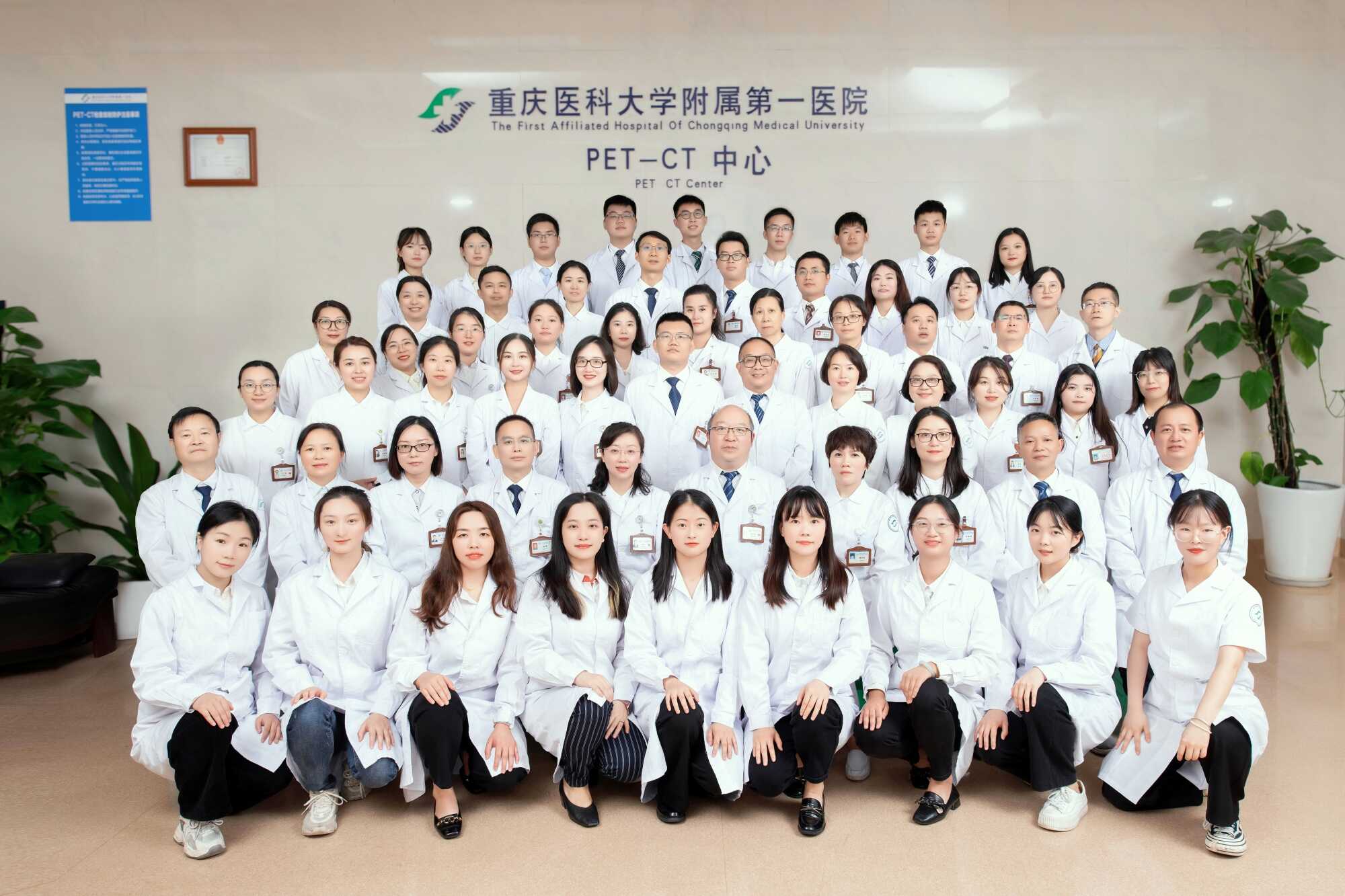The Department of Nuclear Medicine at First Affiliated Hospital of Chongqing Medical University was established in 1958 by experts from the former Shanghai Medical College (now Affiliated Hospital of Fudan University) who relocated to Chongqing. This marks the inception of nuclear medicine in Chongqing and is one of the earliest nuclear medicine departments established in China.
In 1989, the department introduced Chongqing’s first γ-camera, laying the foundation for nuclear medicine development. In 2003, SPECT was introduced, and in 2008, the system was upgraded to SPECT/CT, significantly improving diagnostic accuracy and visualization. In 2011, the department introduced the third-generation TOF (time-of-flight) PET/CT along with a cyclotron accelerator, marking its entry into the new era of molecular imaging diagnosis. In 2020, the department was approved to introduce the cutting-edge PET/MR equipment, further supporting the diagnosis of challenging cases and early disease detection, providing a solid foundation for precise treatment.
Over 60 years of development, the department has evolved into a comprehensive center integrating advanced molecular imaging (SPECT/CT, PET/CT, PET/MR), radionuclide therapy, specialized outpatient services, and laboratory functions. It is recognized as a National Key Clinical Specialty and is a member of the Sichuan-Chongqing Nuclear Medicine Medical Quality Control Alliance. Additionally, it serves as the Chongqing Nuclear Medicine Quality Control Center, the Chongqing Nuclear Medicine Diagnosis and Treatment Center, and is an authorized doctoral and master’s degree-granting institution for nuclear medicine. It is also a National Nuclear Medicine Resident Standardized Training Base. The department’s overall strength ranks among the top in Chongqing, with the specialty reputation of Fudan University ranking first in Chongqing for seven consecutive years.
Department Talents: The department has a robust team comprising 45 medical staff members, including 9 with senior titles, 9 post-doctoral researchers, 16 PHD. holders, 11 master’s degree holders, 1 doctoral supervisor, 4 master supervisors, and 5 provincial and ministerial-level talents.
Technological Development: Over nearly 50 years, the department has evolved into a renowned thyroid disease diagnosis and treatment center in Southwest China, providing high-quality outpatient services and long-term follow-up for thyroid patients. The department’s dedicated radionuclide therapy ward has 16 beds, making it one of the few nuclear medicine wards of such scale in China. Its radionuclide therapy for thyroid cancer is a hallmark, with nearly 1,000 patients receiving treatment annually. The department boasts cutting-edge equipment such as third-generation TOF time-of-flight PET/CT, cyclotron accelerators and SPECT/CT. In 2020, it was approved to introduce PET/MR, thereby enhancing its high-end tumor imaging capabilities. The integration of image fusion technology - combining the functional strengths of SPECT and PET with the morphological detail of CT and MRI - greatly improves diagnostic accuracy. In 2019, the department was granted the first Radioactive Drug Use License (Class IV) in Chongqing by the Drug Administration, further advancing its precise diagnostic and treatment services. The department also offers radionuclide therapies for metastatic bone pain, radioactive 125I particle implantation for tumors, and radionuclide therapy for skin scars, aiming to alleviate patient pain and improve quality of life.
Teaching and Research: The department has contributed to the development of several nuclear medicine textbooks published by Baijia Press and is responsible for teaching nuclear medicine courses at Clinical College of Chongqing Medical University. Its educational activities include theoretical lectures, demonstrations, and internships across multiple levels (e.g., Clinical 5+3 Programs, undergraduate clinical courses, international student courses, and imaging technology courses). It also provides standardized training for nuclear medicine residents and continuing education for physicians from grassroots hospitals. Additionally, the department has undertaken numerous research projects funded by the National Natural Science Foundation, the Chongqing Science and Technology Committee and Health Bureau, and has published over 100 academic papers, with a steady increase in the number of SCI-indexed publications in recent years.
Ongoing Projects:
1. PET/CT, PET/MR: The department has been conducting 18F-FDG PET/CT tumor imaging for over a decade, accumulating extensive experience in early diagnosis, staging, re-staging, treatment evaluation, and prognosis prediction. With the introduction of PET/MR imaging technology in recent years, its ability to diagnose challenging cases and support precise treatment has been further enhanced. The department holds a Class IV radioactive drug use license and can independently produce more than 20 types of positron emission imaging agents. To meet clinical and research needs, it also conducts new tumor imaging with 68Ga-FAPI novel broad-spectrum tumor imaging, 68Ga-PSMA for prostate cancer, 68Ga-CXCR4 for aldosterone-producing adenomas and hematological diseases, 68Ga-DOTATATE for neuroendocrine tumors, 18F-FES for estrogen receptor imaging in breast cancer, 18F-FCH for parathyroid imaging, 18F-Aβ for amyloid deposition imaging, 18F-tau for tau protein imaging, and 11C-CFT for dopamine receptor imaging, providing valuable support for tumor diagnosis and functional imaging in other systems.
2. SPECT/CT: The department performs various imaging procedures including bone imaging, sentinel lymph node imaging, myocardial blood flow perfusion imaging, pulmonary ventilation/perfusion imaging, thyroid imaging, salivary gland imaging, kidney GFR imaging, adrenal medulla imaging, ocular imaging and ectopic gastric mucosa imaging. In 2023, it launched myocardial amyloid imaging to provide an early diagnostic method for patients with myocardial amyloidosis.
3. Radionuclide Therapy: The department offers a broad spectrum of radionuclide therapies, including 131I therapy for residual or metastatic lesions of differentiated thyroid cancer, 131I therapy for hyperthyroidism, 125I particle implantation for various tumors, 89Sr radionuclide therapy for metastatic bone pain, and 32P radionuclide therapy for skin scars.





